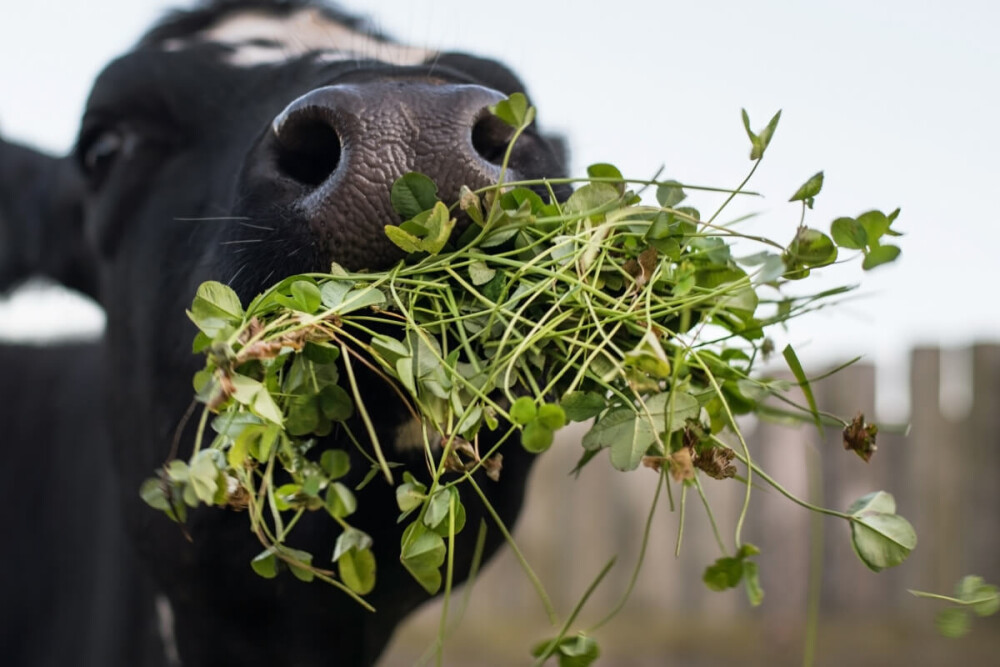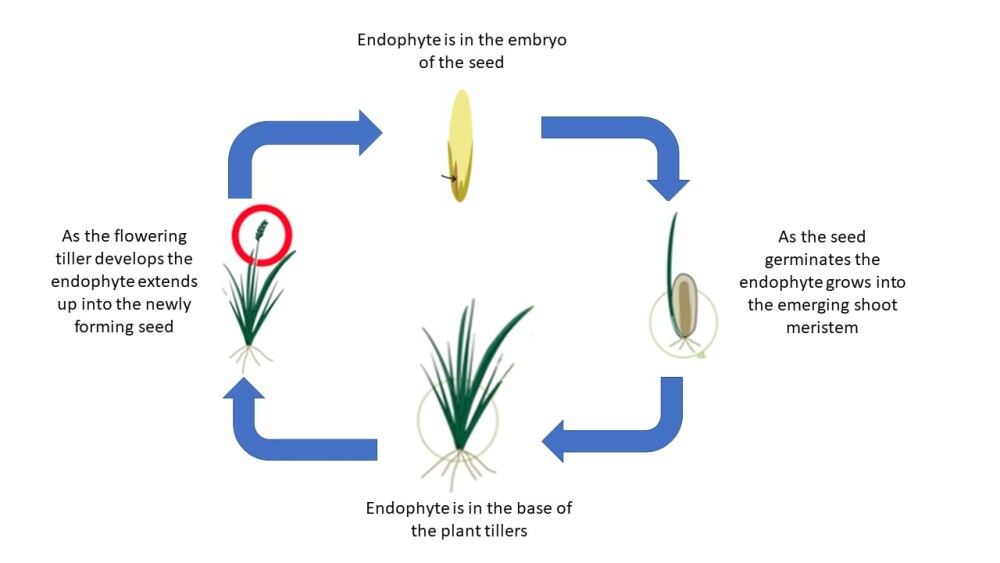The known secondary metabolites fall into four groups:
- Ergot alkaloids – which can be divided into four groups based on their chemical structure: clavines (e.g. chanoclavine, agroclavine), lysergic acid, lysergic acid amides (e.g. ergonovine, ergine), and ergopeptines (e.g. ergovaline, ergotamine, ergocornine, ergocristine, ergosine, ergocryptine);
- Indole diterpenoids – lolitrems, epoxyjanthitrems, terpendoles, paxilline;
- Lolines – N-formyl loline (NFL), N-acetyl loline (NAL), N-acetylnorloline (NANL); and
- Pyrrolopyrazine – peramine.
These can have a range of effects on both grazing animals and/or insect pests. Notably, ergot alkaloids and indole-diterpenoids affect both ruminants and some insects while pyrrolopyrazines, and loline alkaloids have little or no effect on grazing ruminants but do deter or kill insect pests. The variation between Epichloë strains for alkaloid production provides an opportunity to select strains that reduce animal health and welfare issues and yet protect the plant against insect pests.
In some regions of New Zealand, Epichloë endophyte is essential for perennial ryegrass persistence. However, because some endophyte strains contain alkaloids that cause animal health concerns, the challenge for seed companies seeking to commercialise effective Epichloë strains is to identify strains expressing secondary metabolites that do not cause animal health and welfare issues but do provide protection against insect pests. Grasslanz owns several Epichloë endophyte strains have been commercialized in New Zealand for use with perennial ryegrass.
Epichloë life cycle:
In planta, asexual Epichloë spp. complete their entire life cycle within the host plant’s tissues. Dissemination of Epichloë to the next plant generation occurs through vertical transmission of fungal hyphae via the seed of the host plant and is moderated by the compatibility of the endophyte strain with the host’s genetics. Asexual Epichloë generally do not produce spores except when grown axenically within a laboratory environment.


